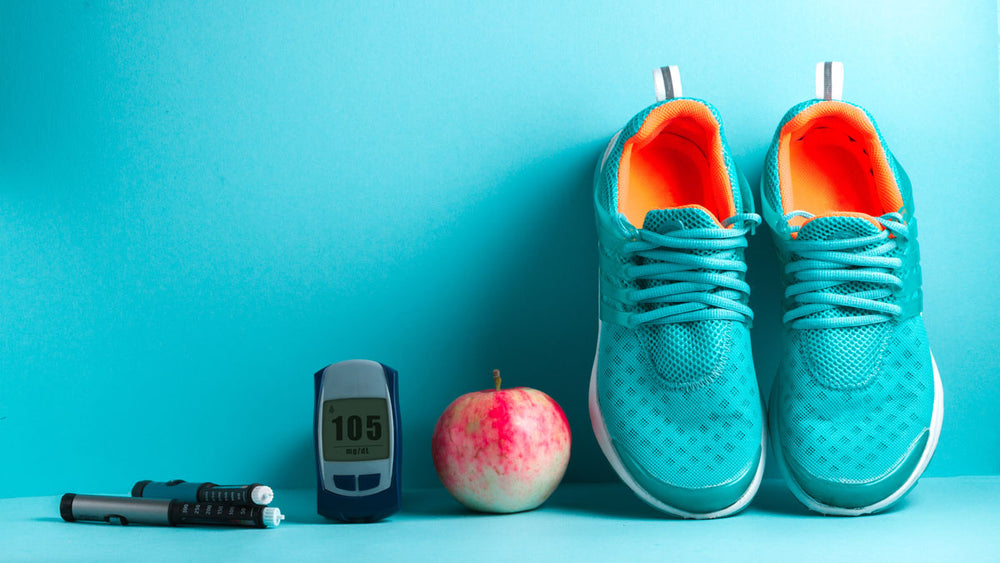Pre-workouts are one prominent branch of dietary supplements.
In the United States, dietary supplements are very loosely regulated, under a law known as the Dietary Supplement Health and Education Act of 1994 (DSHEA). Under DSHEA, the FDA does not evaluate or test dietary supplements before they are made available to consumers. This lax regulatory environment threatens quality control, and ultimately consumer safety.
I will address three potential areas of concern: 1) Gastrointestinal health, 2) Heart and liver issues, and 3) Quality control issues.
GI Distress-
Caffeine and sugar, two common ingredients in pre-workout formulae, have both been associated with increased GI distress. The key to minimizing the risk of GI disturbance is to moderate the dosage ingested. Caffeine has been found to provide performance-enhancing benefits when ingested in a range of 3-6 mg/kg of body mass. Ingesting caffeine in doses >500 mg increases the odds of GI upset with no evidence of further performance benefits.
High doses of sugar can also irritate the gut. Sugars must be absorbed in the intestine through a series of transporter proteins. Overloading these proteins in one setting leads the intestine to absorb more water, which can result in bloating and diarrhea. In an effort to reduce sugar content, pre-workouts can also contain artificial sweeteners, such as sugar alcohols which are high in FODMAPs. This means artificial sweeteners can irritate the gut, leading to bloating, flatulence and diarrhea as well.
Heart and Liver Issues-
Caffeine and other stimulants (ephedrine, MDAA) that have been incorporated into pre-workouts increase heart rate and blood pressure. This can sometimes lead to irregular heartbeats (arrhythmias), or abnormal changes in blood pressure. The risk of arrhythmias appears to be exacerbated when caffeine is combined with taurine, as is the case with some brands of pre-workout. In the worst (and thankfully rare) instances, ingesting an excess of caffeine-containing energy drinks has been associated with heart attacks during exercise.
Niacin, contained in some pre-workouts, has been prescribed as a supplement to improve levels of health (HDL) cholesterol which should protect against cardiovascular disease. However, at least one large-scale study found chronic niacin supplementation was associated with worse outcomes and no measurable benefits. Pre-workouts containing niacin often contain a large dose, near the tolerable upper limit for this vitamin. This increases the potential for overdosing on niacin, which in rare cases has been associated with acute hepatitis and liver failure.
Quality Control –
With loose oversight over their manufacture, dietary supplements, including pre-workouts, have been found to have poor quality control. For example, the caffeine content of a pre-workout supplement has been found to vary as much as 266%(!) within the same batch, which could greatly increase the risk of overdose.
Spiking supplements is a concern as well. With lax regulation, supplement manufacturers can and have added illicit substances. This could include FDA-banned or NCAA or WADA-prohibited ingredients, such as the stimulant MDAA, to their products without advertising that information on the label. The dietary supplement industry has worked to self-regulate, creating NSF and USP certifications to ensure consumers that products contain advertised ingredients and are free of banned substances.
What is the Takeaway?
What you choose to do should ultimately depend on who you are and what you want to accomplish. My choice has been never to use pre-workouts, but you may make a different choice! If you use pre-workouts, I would suggest you look for products with NSF or USP certification to ensure quality control. Athletes competing in drug-tested organizations should choose NSF-certified products. I would also suggest you avoid products with high doses of caffeine and niacin. Good luck!
In case you missed them: 1 ) Let's Talk About Pre-Workout Supplements and 2) Pre-Workout Supplements- Do They Work?
- Attipoe, S., Cohen, P. A., Eichner, A., & Deuster, P. A. (2016). Variability of Stimulant Levels in Nine Sports Supplements Over a 9-Month Period. International journal of sport nutrition and exercise metabolism, 26(5), 413–420.
- Berger, A. J., & Alford, K. (2009). Cardiac arrest in a young man following excess consumption of caffeinated "energy drinks". The Medical journal of Australia, 190(1), 41–43.
- Cao, D. X., Maiton, K., Nasir, J. M., Estes, N. A. M., & Shah, S. A. (2021). Energy Drink-Associated Electrophysiological and Ischemic Abnormalities: A Narrative Review. Frontiers in cardiovascular medicine, 8, 679105.
- Ellermann, C., Hakenes, T., Wolfes, J., Wegner, F. K., Willy, K., Leitz, P., Rath, B., Eckardt, L., & Frommeyer, G. (2022). Cardiovascular risk of energy drinks: Caffeine and taurine facilitate ventricular arrhythmias in a sensitive whole-heart model. Journal of cardiovascular electrophysiology, 33(6), 1290–1297.
- Grabitske, H. A., & Slavin, J. L. (2009). Gastrointestinal effects of low-digestible carbohydrates. Critical reviews in food science and nutrition, 49(4), 327–360.
- Grinberg, N., Benkhedda, K., Barber, J., Krahn, A. D., & La Vieille, S. (2022). Effects of caffeinated energy drinks on cardiovascular responses during exercise in healthy adults: a systematic review and meta-analysis of randomized controlled trials. Applied physiology, nutrition, and metabolism = Physiologie appliquee, nutrition et metabolisme, 47(6), 618–631.
- Guest, N. S., VanDusseldorp, T. A., Nelson, M. T., Grgic, J., Schoenfeld, B. J., Jenkins, N. D. M., Arent, S. M., Antonio, J., Stout, J. R., Trexler, E. T., Smith-Ryan, A. E., Goldstein, E. R., Kalman, D. S., & Campbell, B. I. (2021). International society of sports nutrition position stand: caffeine and exercise performance. Journal of the International Society of Sports Nutrition, 18(1), 1.
- Huang, B., Kunkel, D., & Kabany, M. E. (2014). Acute Liver Failure Following One Year of Daily Consumption of a Sugar-Free Energy Drink. ACG case reports journal, 1(4), 214–216.
- Ingles, D. P., Cruz Rodriguez, J. B., & Garcia, H. (2020). Supplemental Vitamins and Minerals for Cardiovascular Disease Prevention and Treatment. Current cardiology reports, 22(4), 22.
- Jagim, A. R., Camic, C. L., & Harty, P. S. (2019). Common Habits, Adverse Events, and Opinions Regarding Pre-Workout Supplement Use Among Regular Consumers. Nutrients, 11(4), 855.
- Jagim, A. R., Harty, P. S., & Camic, C. L. (2019). Common Ingredient Profiles of Multi-Ingredient Pre-Workout Supplements. Nutrients, 11(2), 254.
- Kent, S., Haynes, R., Hopewell, J. C., Parish, S., Gray, A., Landray, M. J., Collins, R., Armitage, J., Mihaylova, B., & HPS2-THRIVE Collaborative Group (2016). Effects of Vascular and Nonvascular Adverse Events and of Extended-Release Niacin With Laropiprant on Health and Healthcare Costs. Circulation. Cardiovascular quality and outcomes, 9(4), 348–354.
- Loria, K. 2019. How to Choose Supplements Wisely. Accessed Nov 30, 2022.
- Monakhova, Y. B., Ilse, M., Hengen, J., El-Atma, O., Kuballa, T., Kohl-Himmelseher, M., & Lachenmeier, D. W. (2014). Rapid assessment of the illegal presence of 1,3-dimethylamylamine (DMAA) in sports nutrition and dietary supplements using 1H NMR spectroscopy. Drug testing and analysis, 6(9), 944–948.
- USADA. Medications vs. Supplements. 2017. Accessed Nov 30, 2022.
- Vivekanandarajah, A., Ni, S., & Waked, A. (2011). Acute hepatitis in a woman following excessive ingestion of an energy drink: a case report. Journal of medical case reports, 5, 227.
- Wilson P. (2022). Sport Supplements and the Athlete's Gut: A Review. International journal of sports medicine, 43(10), 840–849.



















Comments
Join The Conversation...